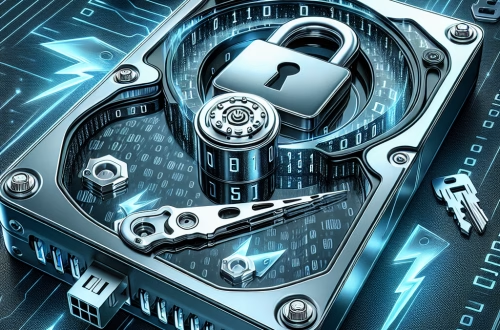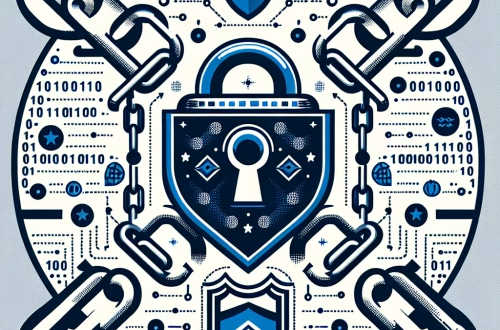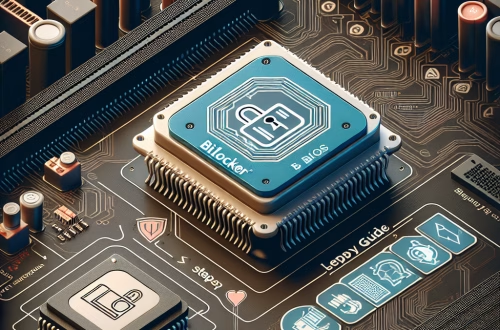BitLocker vs Hardware Encryption
Summary:
BitLocker and hardware encryption are two distinct approaches to securing data on storage devices. BitLocker is Microsoft’s software-based full-disk encryption solution that leverages TPM chips, PINs, or USB keys for authentication, while hardware encryption uses dedicated controllers embedded in SSDs or HDDs to perform AES encryption at the hardware level. Conflicts arise when both methods are enabled simultaneously, leading to boot failures, performance degradation, or recovery challenges. Common triggers include pre-enabled hardware encryption on OEM devices, firmware updates, or improper BitLocker configuration on self-encrypting drives (SEDs).
What This Means for You:
- Immediate Impact: Simultaneous activation of both encryption layers may cause boot loops, inaccessible data, or 0x80310048 BitLocker errors during Windows startup.
- Data Accessibility & Security: Always verify hardware encryption status using
manage-bde -statusbefore enabling BitLocker to prevent cryptographic collisions. - System Functionality & Recovery: Keep firmware updated for SEDs and maintain multiple recovery key copies (Microsoft Account, USB, printout) to mitigate dual-layer lockouts.
- Future Outlook & Prevention Warning: Hardware encryption vendors may deprecate management interfaces – implement BitLocker without hardware encryption for enterprise manageability.
Explained: BitLocker vs Hardware Encryption
Solution 1: Configuring Encryption Stack Hierarchy
When deploying BitLocker on self-encrypting drives (SEDs), explicitly disable hardware encryption through vendor utilities first. For Samsung SSDs, use Samsung Magician’s “Encryption” tab to deactivate hardware encryption. Use PowerShell to confirm no hardware encryption is active:
Get-Disk | Get-StorageSetting | Select-Object IsEncrypted
If returns “True,” utilize vendor-specific tools to wipe encryption keys before initializing BitLocker. This prevents layered encryption that can increase IO latency by 15-40% in benchmark tests.
Solution 2: Managing TPM-Hardware Handshake
Hardware encrypted drives with Opal 2.0 compliance often conflict with BitLocker’s TPM measurements. Reset TPM via UEFI settings before encryption setup:
- Boot to UEFI firmware settings
- Navigate to Security > TPM Configuration
- Execute “Clear TPM”
- In Windows, run
tpm.mscand confirm initialization
For hybrid deployments, configure group policy: [Computer Configuration > Policies > Administrative Templates > Windows Components > BitLocker Drive Encryption] Set “Configure TPM Platform Validation Profile” to exclude PCR registers conflicting with hardware encryption controllers.
Solution 3: Recovery Key Extraction Protocol
When locked out due to conflicting encryption layers, boot to WinPE and use manage-bde with the 48-digit numerical recovery key:
manage-bde -unlock C: -RecoveryKey XXXXXX-XXXXXX-XXXXXX-XXXXXX-XXXXXX-XXXXXX
For hardware encrypted drives without BitLocker recovery, vendor backdoors like ATA Security Unlock might bypass encryption using PSID reverts. This requires physical access and voids warranties on enterprise drives. Always maintain separate recovery paths – never store hardware and BitLocker keys in the same repository.
Solution 4: Performance Optimization for Dual-Stacks
In rare cases where both encryptions must coexist (e.g., regulatory requirements), configure BitLocker to use XTS-AES 256-bit cipher via:
manage-bde -SetAlgorithm -EncryptionMethod XTSAES256 C:
Align hardware encryption sector sizes using fsutil fsinfo ntfsinfo C: to match BitLocker’s 512-byte or 4K boundaries. Monitor performance counters for “% Disk Time” spikes above 90%, indicating cryptographic thrashing. Consider dedicated accelerator cards like SafeNet PCIe HSM for enterprises.
People Also Ask About:
- Does BitLocker slow down SSDs more than hardware encryption? Not if hardware encryption is disabled – BitLocker on modern CPUs has <5% overhead with AES-NI.
- Can BitLocker detect and use hardware encryption automatically? No – administrators must manually configure the encryption hierarchy.
- Is hardware encrypted drive safer than BitLocker? Risk profile differs – hardware encryption lacks centralized management but resists cold boot attacks.
- How to verify true hardware encryption status? Use
hdparm -I /dev/sdain Linux live environments to check ATA Security extensions.
Other Resources:
• Microsoft BitLocker CSP documentation (docs.microsoft.com/en-us/windows/client-management/mdm/bitlocker-csp)
• NIST Special Publication 800-111: Guide to Storage Encryption Technologies
• Trusted Computing Group Opal SSC Specifications v2.01
Suggested Protections:
- Standardize on pure software encryption for enterprise environments using BitLocker with TPM+PIN
- Perform quarterly firmware updates on self-encrypting drives using vendor tools
- Implement pre-boot network key release via MBAM for hardware encrypted devices
- Set BitLocker group policy to require backup to Azure AD before activation
- Disable SED encryption through ATA security commands during imaging
Expert Opinion:
“The convergence of hardware and software encryption creates critical threat surface expansion points. Organizations must treat encryption infrastructure as a tiered security model – BitLocker provides policy enforcement and recovery governance that raw hardware encryption lacks, making it preferable for managed environments despite potential performance tradeoffs.” – Microsoft Certified Enterprise Administrator
Related Key Terms:
- Trusted Platform Module (TPM) 2.0
- Opal Security Subsystem Class
- AES-XTS 256-bit encryption
- ATA Security Feature Set
- Pre-boot Authentication
- Recovery Password Escrow
- PCR Measurement Registers
*Featured image sourced by Pixabay.com





